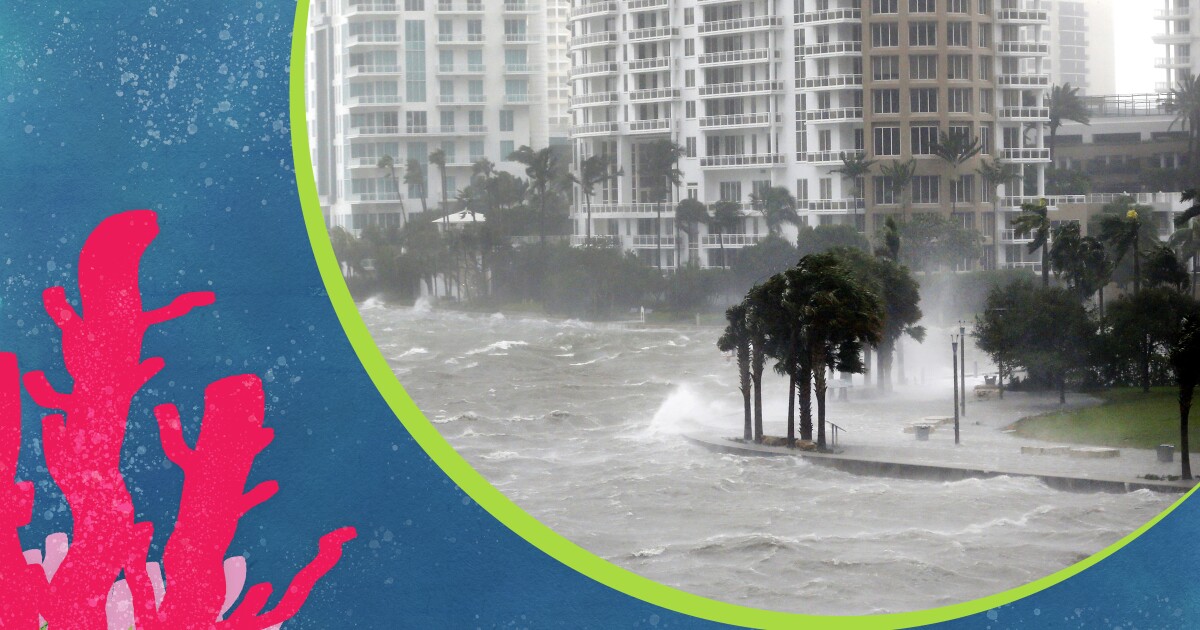The fish and bird species at risk from Australia’s failure to manage wetlands

Australia risks breaching its international commitments to preserve critical wetlands, with many fish and bird species facing extinction, new research shows.
Peer-reviewed papers by researchers at the Australian National University have identified critical problems in how state and federal governments have met obligations laid out in the Ramsar Convention, a global pact to protect wetlands.
An aerial view of the Southern Macquarie Marshes Nature Reserve in August 2019. The area is part of a Ramsar-listed wetland. Credit:Wolter Peeters
They examined six of the 16 Ramsar-listed wetlands within the Murray-Darling Basin, home to the nation’s longest regularly flowing rivers and its primary food bowl. The basin is also the recipient of $13 billion to help restore its health, especially wetland areas that are critical for fish and birdlife.
The researchers assessed 52 different plans and strategies at federal and state levels intended to support areas such as the Macquarie Marshes and Narran Lakes in NSW with managed water flows.
Op-Ed: How to save beaches and coastlines from climate change disasters
 ]
]
The frequency of natural disasters has soared in recent decades. Total damage topped $210 billion worldwide in 2020. With climate change, the costs attributed to coastal storms will increase dramatically.
At the same time, coastal habitats such as wetlands and reefs are being lost rapidly. Some 20% of the world’s mangroves were lost over the last four decades. More than half of the Great Barrier Reef was degraded by bleaching in 2020 alone. In California, we have lost more than 90% of our coastal marshes.
Coastal habitats serve as a critical first line of defense, and their loss puts communities at even greater risk from coastal flooding. Coral reefs work as natural breakwaters and reduce flooding by breaking waves offshore. Wetlands such as marshes and mangroves protect coastlines by dampening storm surge and waves; they also prevent erosion and can build new land.
On Jan. 27, President Biden committed to protect 30% of U.S. land and coastal seas by 2030 as part of the U.S. climate strategy. These 30-by-30 targets are already being adopted by many nations ahead of the upcoming United Nations Convention on Biological Diversity meeting.
Advertisement
Less certain is how we can pay for this when national budgets are stretched. The answer is to use nature to help us. We spend hundreds of billions every year on disaster management and post-disaster recovery, and less than 3% of this on natural defenses, which could reduce the damage of these disasters.
Mangrove restoration has proved successful in defending coastal areas. Hundreds of thousands of acres have been replanted across the tropics, mainly in Southeast Asia. But more than 25,000 acres are still lost every year. New studies that combine flood risk and economic models show that mangroves reduce property damage from storms by $65 billion annually across more than 400,000 miles of coastline in 100-plus nations.
Coral reef restoration has lagged further behind. The flood risk models show that when we lose just the top 1 meter (about 3 feet) of coral reefs, the annual cost of storms will double globally, including in hot spots where reefs provide millions of dollars of flood protection annually. The U.S. has more than 325 kilometers (about 202 miles) of these critical reefs in two states and four territories.
The good news is that reefs and wetlands can recover and even adapt. But the sad truth is we don’t protect what we don’t value. That’s why we need to change the way we account for the economic value of natural assets and the costs of their loss. The flood risk studies lay the foundation for that change. Here’s what we can do to change how we defend our coastlines.
Include environmental assets in national economic accounting.
Currently, economic indicators such as gross domestic product account for only what we take from the environment, be it fish or timber. We don’t place a value on the natural assets we leave intact that provide critical benefits such as flood protection. But we can incorporate these values in national economics — as the World Bank and the United Nations are doing — by assessing the value of natural assets, just as we would for, say, a seawall.
Rethink public and private infrastructure investments.
Significant opportunities exist to greatly expand support for natural infrastructure using the same financial mechanisms that have traditionally supported infrastructure projects, like roads and levees. In 2016, residents across all nine San Francisco Bay Area counties overwhelmingly approved a small tax on every parcel of land to finance wetland restoration.
Advertisement
The Biden administration has proposed significant investments in the nation’s crumbling built infrastructure. It should also invest more to restore degraded natural infrastructure, which can help create green jobs.
One promising example is Reefense, a project recently started by the Defense Department to build coral and oyster reefs to defend U.S. military installations in coastal areas around the world. The department found that traditional protections such as seawalls may amplify wave energy, exacerbate flooding and increase erosion. It is moving to develop the use of reefs and reef-mimicking structures to deal with the effects of storms and sea level rise.
Allocate more disaster recovery money to repair storm-damaged natural defenses.
After the 2017 hurricanes devastated the coasts of Florida, Puerto Rico, Texas and the U.S. Virgin Islands, Congress appropriated $100 billion to rebuild coastal infrastructure. Less than 0.02% of those funds may go to rebuild the storm-ravaged reefs that protect people from San Juan to Miami.
Advertisement
Identifying coastal habitats as national infrastructure would help ensure that we quickly rebuild them after storms just as we do constructed infrastructure. Perversely, coral reef restoration in the U.S. is vastly more expensive than elsewhere because of special permitting requirements. Successful oyster reef restoration in the U.S. can provide lessons that could be applied to coral reefs.
Public and private insurers should expand incentives for natural defenses.
The Federal Emergency Management Agency offers insurance incentives for open space preservation; FEMA and private insurers should expand these to cover natural defenses. Coastal landowners will respond. In Alabama, surveys showed that small incentives could change whether landowners choose to restore marshes or continue to rebuild failing bulkheads.
Using insurance industry risk models, we found that marshes and wetlands prevented more than $625 million in direct flood damage on the New Jersey coast alone during Hurricane Sandy. To broaden incentives to property owners, these habitat-based benefits should be included in the models used by underwriters.
Advertisement
After Hurricane Delta hit the reefs of Quintana Roo, Mexico, in October, an innovative insurance policy, purchased earlier by a public-private coastal trust, paid out money to replace dislodged coral heads and prevent further damage. We should promote such strategies, which the California insurance commissioner’s office is starting to explore.
With help, wetlands and reefs can rebound and serve as resilient defenses for coastlines as they have for millennia. Coastal habitats can even keep up with sea level rise as a dynamic defense — something no artificial structure can do. As we experience more extreme weather catastrophes, the most cost-effective way to protect coastal populations is to do it naturally.
Michael W. Beck is a research professor in the Institute of Marine Sciences at UC Santa Cruz. His work focuses on coastal resilience, climate adaptation and disaster risk reduction.
Are goats the answer to the reed choking US east coast marshes?
 ]
]
Over the past 30 years, land managers in the eastern US and Canada have spent countless man-hours and millions of dollars trying to tame a pernicious, invasive reed known as Phragmites australis. Originally from Europe, phragmites grows in dense, tall stands that choke off native vegetation and litter wetlands with thick mats of decaying biomass.
Toxic herbicides, controlled burns, and even bulldozers have been the go-to solutions to the problem. But recent research out of Duke University suggests another, less aggressive fix: goats.
Using an experimental wetlands site in Maryland, Brian Silliman, an ecologist with the Duke Marine Lab, found that goats were able to reduce phragmites cover by as much as 80% in a matter of weeks. The goats lived on diet of roughly 80-90% phragmites during the study, and the culling allowed a variety of native plants to gain a foothold, Silliman said.
The idea of using goats for land management has gained momentum in other ecosystems, Silliman said, including in the US South, where goats have helped control invasive kudzu for years. But until recently, Silliman said, “there was a sort of tunnel vision among managers of North American marshes.”
Phragmites blow in the wind on Wallops Island in Virginia. Photograph: KEVIN LAMARQUE/REUTERS
The approach is finding some practical applications — including in New York City, where park administrator Eloise Hirsh deployed a herd of goats at Staten Island’s Freshkills Park, a 2,200-acre landfill reclamation project. In two- to three-week spurts, for a total of roughly 10 weeks, the animals grazed a two-acre section of the marshy park, Hirsh said, after which groundskeepers applied herbicides and then reseeded the area with native marsh grasses.
Two years later, according to Hirsh, phragmites remains under control and the test area requires minimal maintenance. “The goats did what we needed them to do,” she said. “They ate everything.”
Of course, not every situation is suited to these hungry herbivores.
Goats, for example, will completely avoid some wetland areas — particularly low-elevation marshes with standing water. And Brian Knox, a supervising forester with Eco-Goats, a vegetation management company in Maryland, noted that goats will not seek out phragmites in an area dominated by other vegetation. In such cases, Knox said, land managers can construct small enclosures to focus the animals on problem areas, moving the fences — and the goats — as the phragmites is consumed.
The impact of goat grazing on phragmites at the wetlands test site in Maryland Photograph: Duke University
But that fencing process can be both labour-intensive and expensive, Knox conceded. Depending on the type of land and plant cover, he estimated that using goats to mitigate invasive plants can cost roughly $1,000 to $3,000 per acre. Often, if a plot of land is small — less than a quarter-acre — it’s more cost effective to simply weed by hand, Knox said.
While Freshkills Park officials did not have a cost comparison available, Hirsh estimated that using the goats was significantly less expensive than bringing in bulldozers. She said she hopes to use the technique park-wide in coming years, largely because relying on goats protects the land from heavy equipment and excessive herbicide use.
“Everyone around here needs to get used to the idea of four-footed greenery management,” Hirsh said.